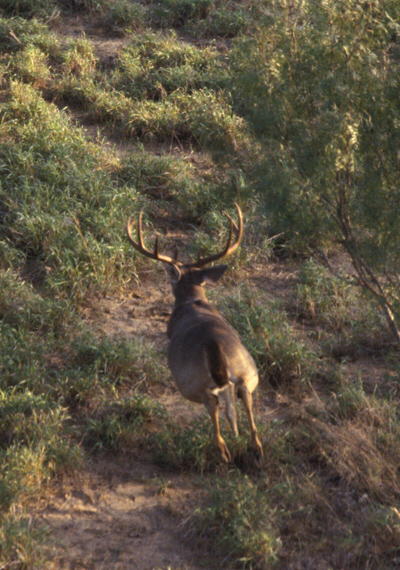by John Jefferson

In 1981, I was hired to photograph deer from a helicopter over a 5,000-acre ranch near the border. A TPWD deer biologist was scheduled to fly an aerial survey of the deer, and I was to accompany them. I was waiting when the helicopter pilot drove in towing the trailored – chopper. The wildlife biologist arrived simultaneously — a large guy with a red beard and a matching bandana around his neck. I introduced myself.
He replied, “I’m Larry Weishuhn. You ready to fly?” That started a 40-year friendship and a new dimension to my life. I’ve since flown some interesting ranches and seen a lot of the Brush Country from the air. And loved it.
Shortly after that, Weishuhn and I both separately began writing about deer and deer hunting. He’s become famous; I’ve learned a lot — some from riding in choppers, some from years of hunting and much from things Larry and others have written. Last week, I read an article in Sporting Classics Magazine by him.
A reader had asked if the buck-doe ratio had anything to do with antler size. Many know that does have as much or more to do with a buck fawn’s genetics as its daddy. But Larry’s reply took it further and included a clear reason why shooting does is wise: It can greatly contribute to creating large antlers!
Larry pointed to longer breeding seasons on ranches that had wide buck-to-doe ratios — say one buck for every six does. Deer breeding is not a hit-and-run thing. They stay together for a period called “tending”, sometimes as long as 24 hours, according to experts, and breeding several times. Some bucks don’t get around to breeding all the does that come into estrus the first or second or even the third or more times, thus dragging out the breeding season.
We’ve all learned that bucks get worn down during breeding. The wider the buck-doe ratio, the longer breeding lasts, and the longer it takes for bucks to recover. That can get them well into winter. At that time, the habitat is suffering from winter stress, so high protein groceries are limited. And the wider the buck-doe ratio, the more competition there is for remaining browse.
The result is that when it’s time for antler development to begin, bucks may still be replenishing bodies worn down from breeding. And bucks’ food intake goes first to bodily needs before antler development, again, according to published research. In winter, Larry wrote that protein levels could drop as low as four percent. More is needed for maximum antler development.
“By removing does, you decrease pressure on browse… providing more quality food for remaining deer. They (bucks) came out of the rut in better body condition, and that improved antler development,” he wrote.
He also stated that the natural ratio on unhunted ranches was 1:1.5. Striving for that could well lead to larger antlers in the future.
But it can only be attained by shooting more does.
JJ




